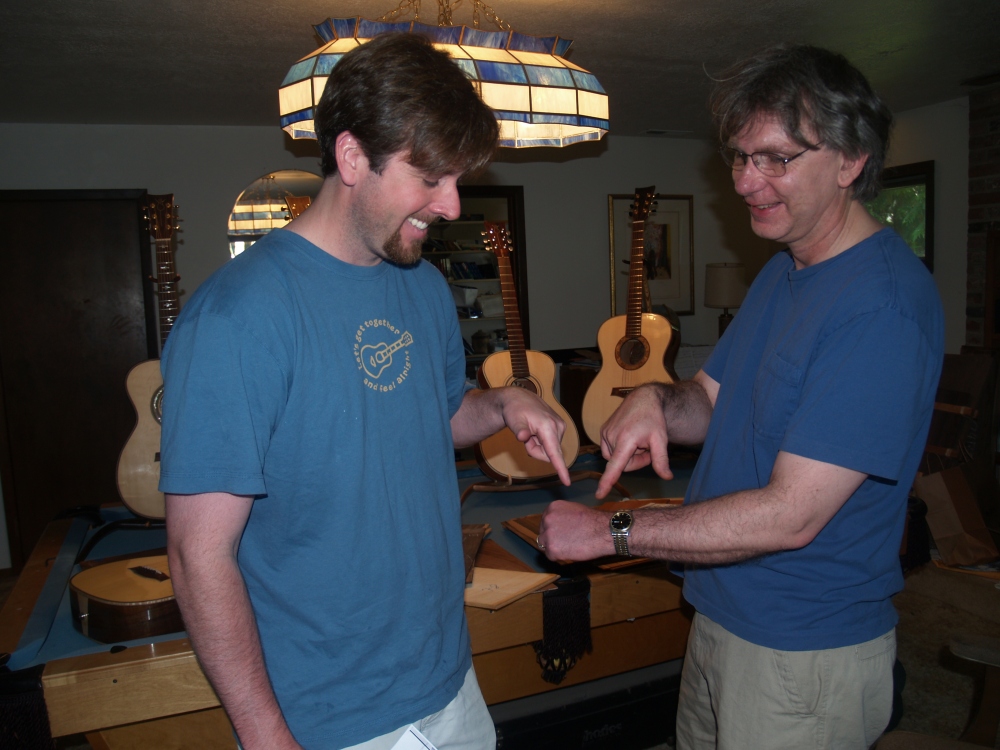 |
(1) July 11, 2008
There is a story here. It was a dark and stormy night...
wait,
wait... The marauding hordes crested the hill... no no that's not it...
The real story: I was opening a brick of cheddar cheese with a small
paring knife, it slipped and I stabbed myself in the back of my hand.
Ouch! I washed it out and put a bandage on the
small but
painful puncture wound I had created and went back to the
movie I
was watching with my wife. Two days later I was in the
emergency
ward with a tender and festering infection in my hand. There
I
met Dr. Jonas McAlarney. As he pumped me full of antibiotics we chatted
about guitars, hit it off and I gave him my card. A week or
so
later I got a call out of the blue from Kelly, his wife.
She
had visited my web site and wanted to give her husband a
present
of a Portland Guitar. And so we met. |
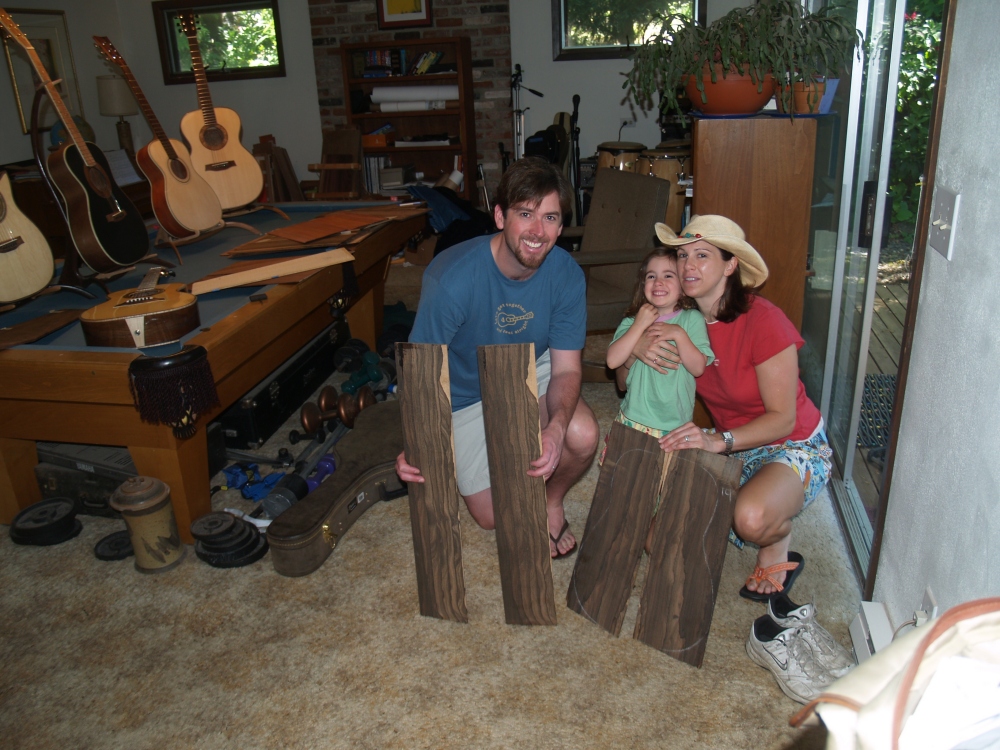 |
(2) July 11, 2008
The family came over to my house and we talked guitars and design
ideas. After some discussion we chose a Jumbo cutaway model
using
Ziricote for the body. |
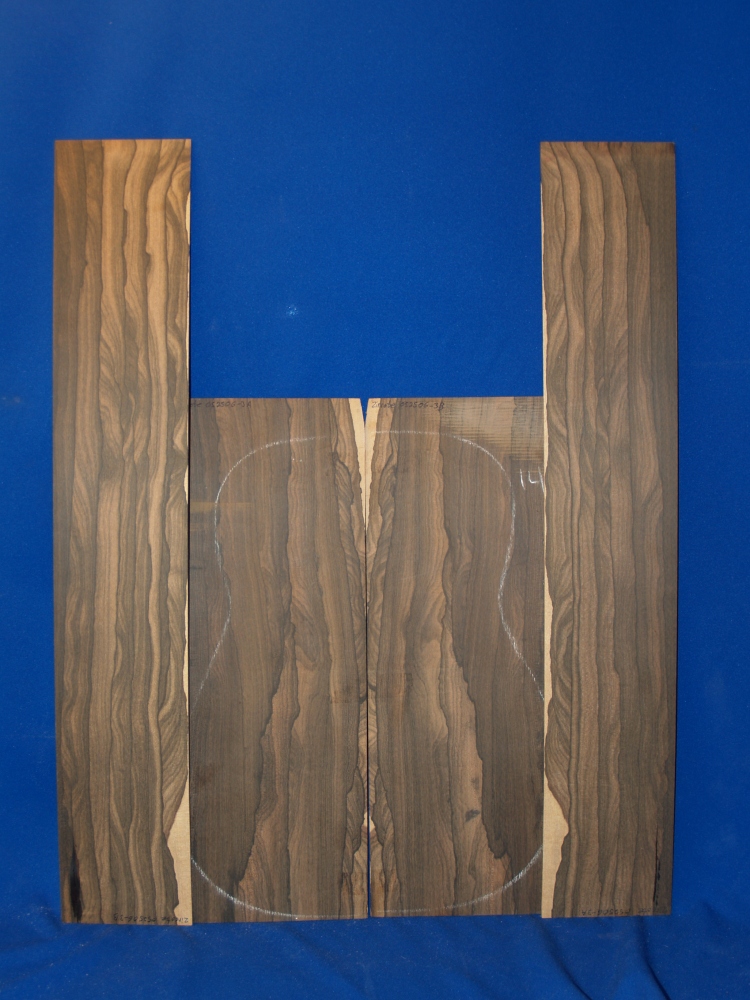 |
(3) July 11, 2008
Ziricote is a beautiful wood with striking figure that grows from
Guatemala to southern Mexico, primarily in Belize. |
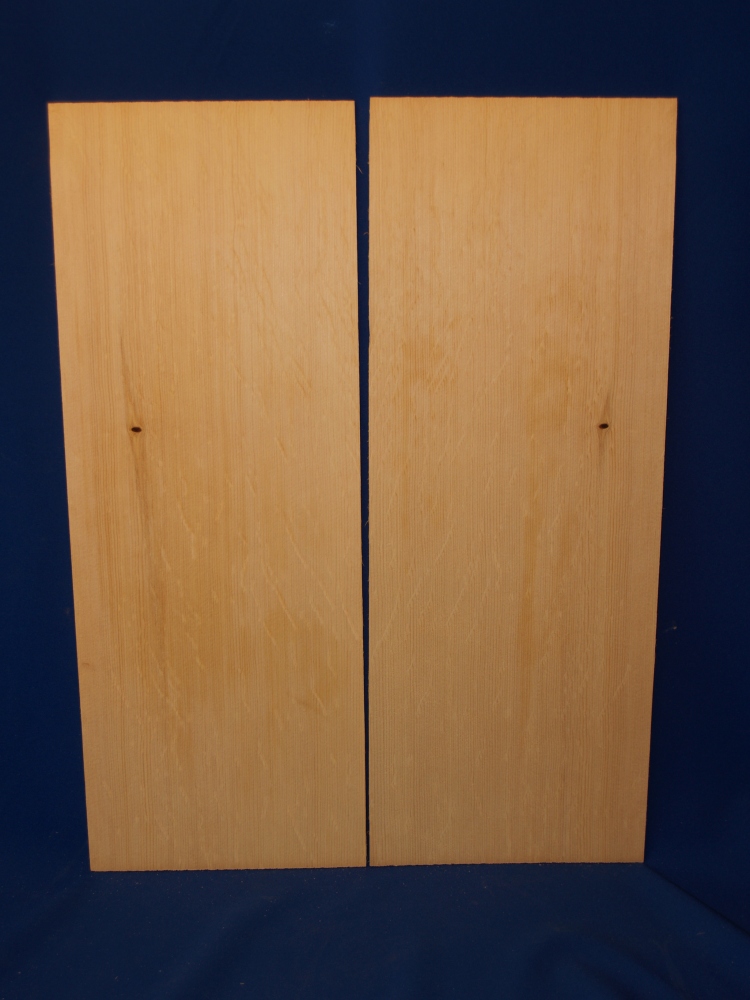 |
(4) July 11, 2008
Kelly expressed a strong preference for a bearclaw top, so I went in
search of a nice set. Note that the knots fall outside of the
top
profile. |
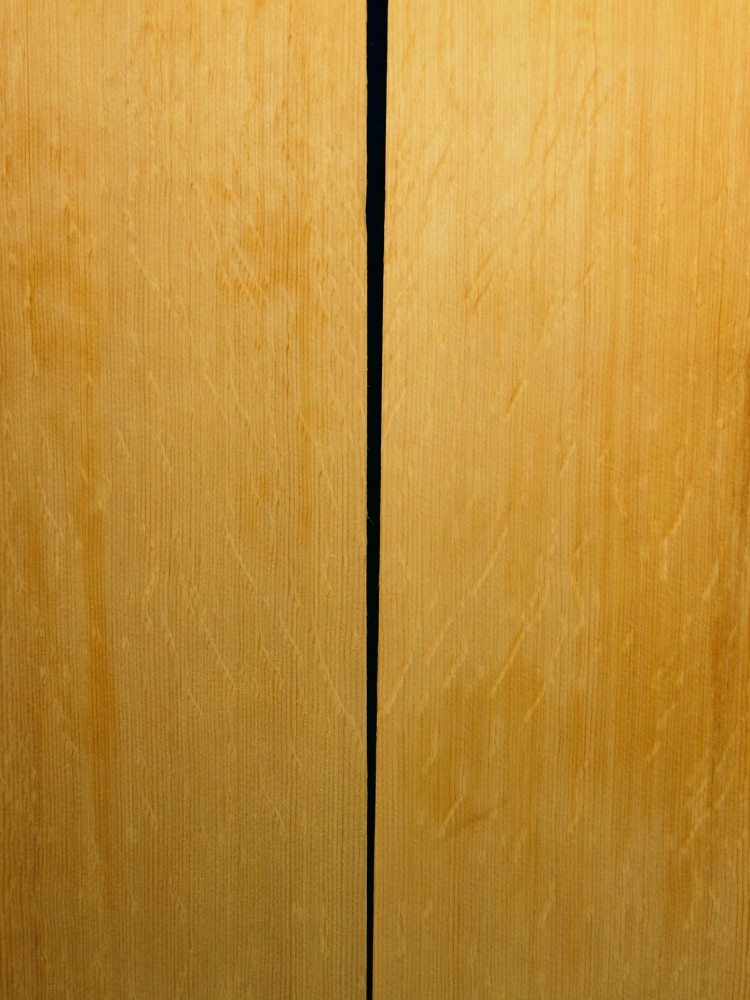 |
(5) July 11, 2008
This picture shows a closer look at the bearclaw figure. This
image has been enhanced to help show the figure. Bearclaw
figure,
or hazelficte-a delightful pattern in the grain occasionally occurring
in all species of spruce. Bearclaw, like the curl in curly maple, is a
rippling of the longitudinal fibers, which divides the surface of the
wood into shimmering patterns. Unlike the even waves that usually occur
in maple, bearclaw usually appears on asymmetrical or randomly broken
patterns. This phenomenon almost always occurs in older trees that have
dense, stiff grain structure and high sound velocity. Thus bearclaw is
usually a reliable indicator of the better examples of tonewoods within
any given species of spruce. << Acoustic
Guitar Magazine, March/April 1994 >> |
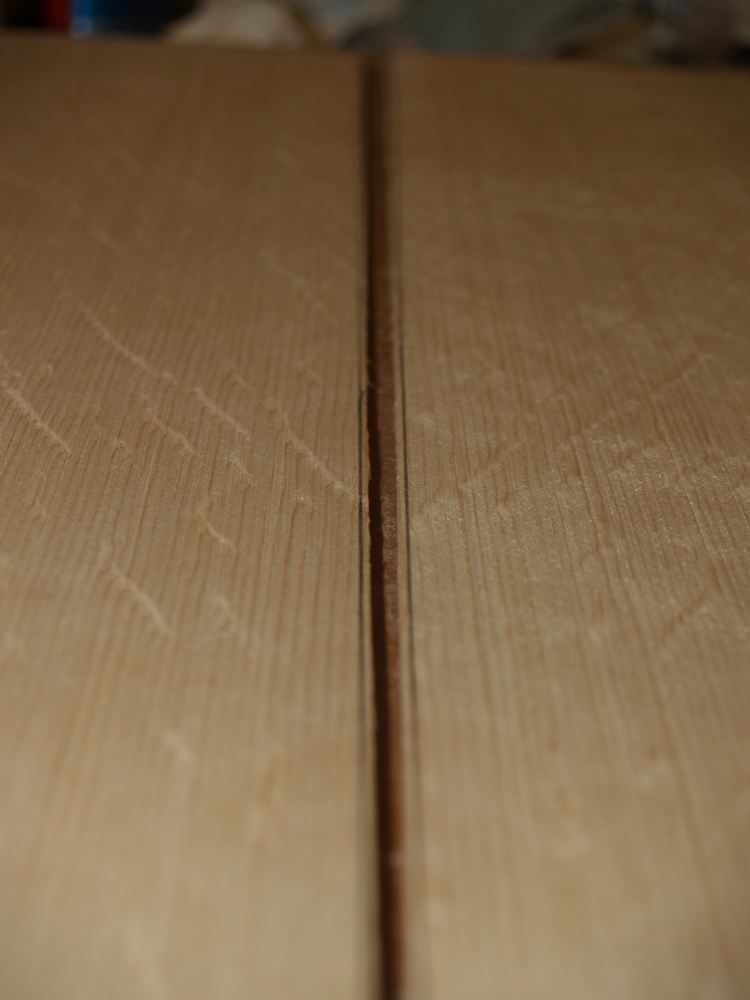 |
(6) July 11, 2008
I start the build process by joining the top pieces together.
Here I have marked the pieces for trimming. |
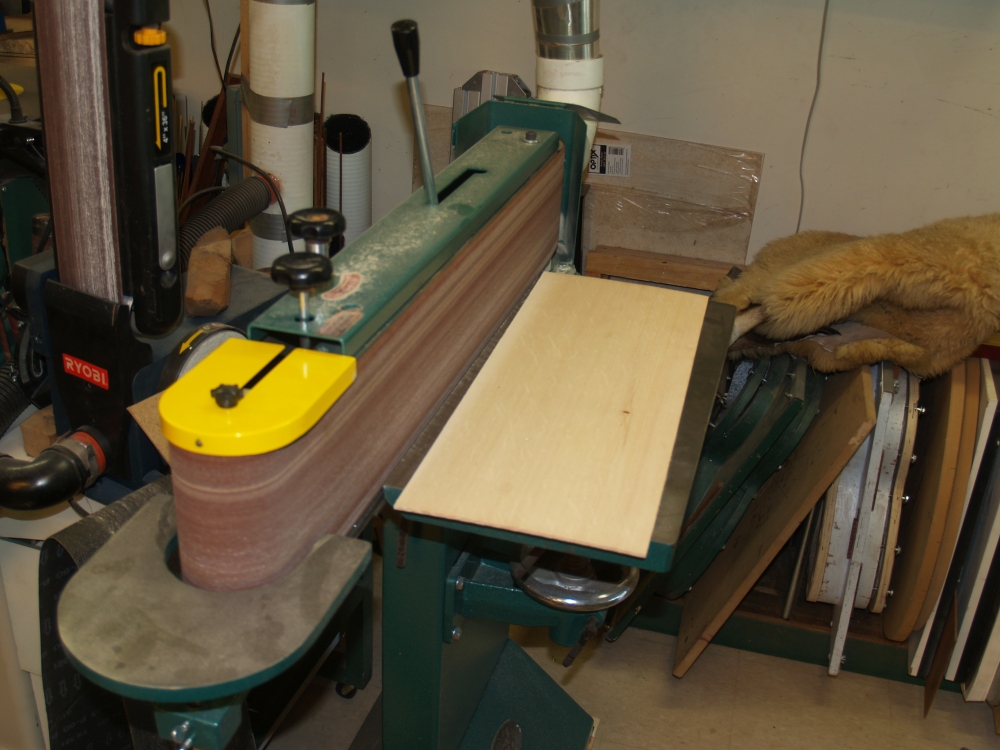 |
(7) July 11, 2008
I use my edge sander to trim them up. |
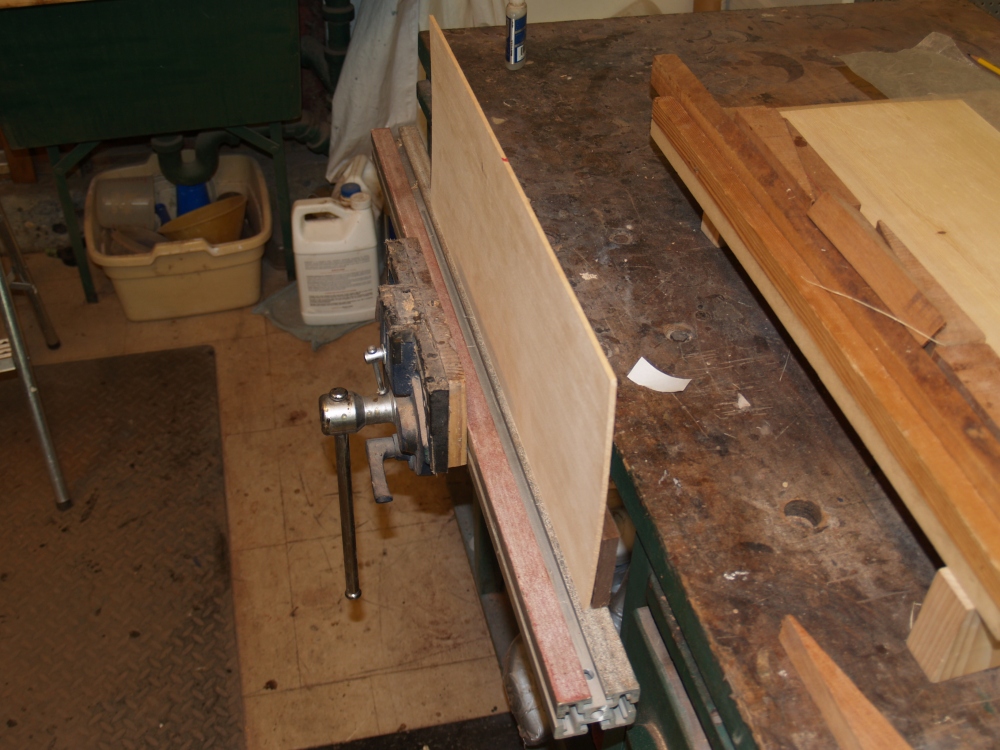 |
(8) July 11, 2008
Next I prepare the edges so they are perfectly flat and square.
I
use a very flat piece of aluminum strut with sandpaper attached to get
the edges just right. When the two pieces of spruce are
butted up
to each other the joint should disappear. |
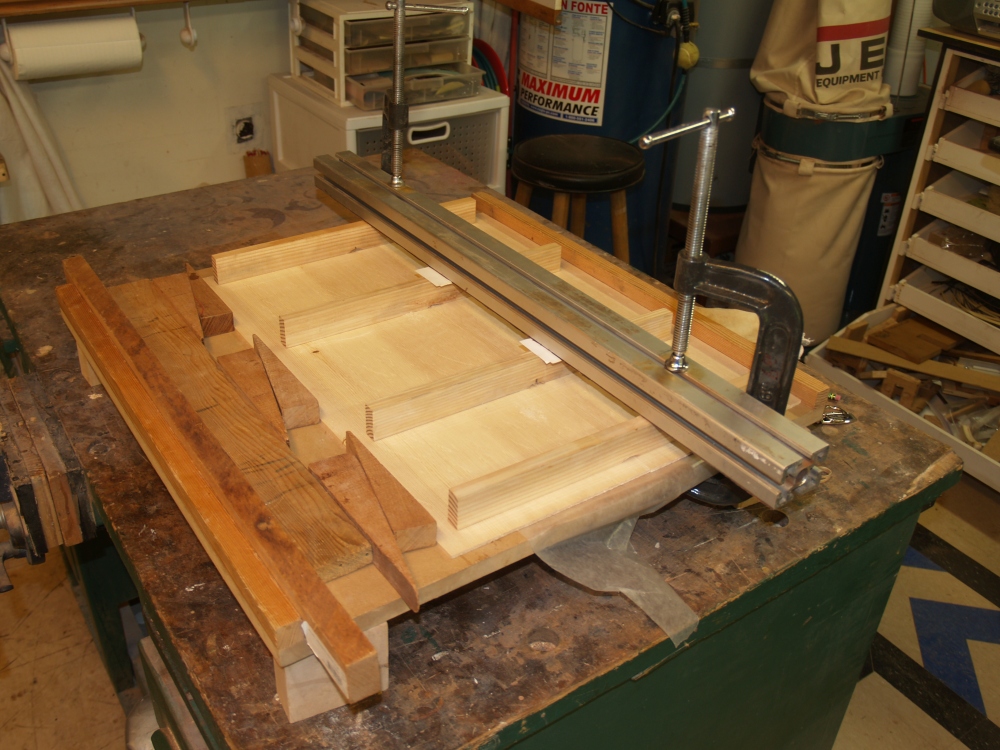 |
(9) July 11, 2008
To join the pieces together I use my joining jig which holds the pieces
flat and presses them together with the wedges. I use a very
thin
line of luthier's white glue as the adhesive. When I am
finished
the seam will be all but invisible. |
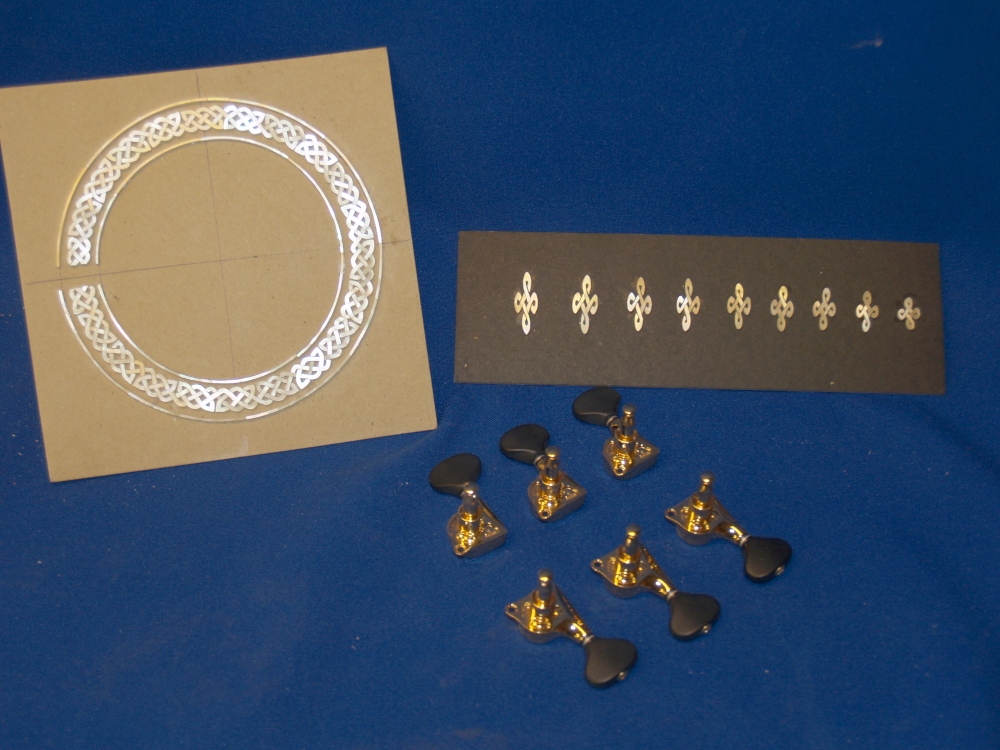 |
(10) July 11, 2008
Here I have a picture of the rosette inlay, fretboard inlay, and the
tuning machines. |









